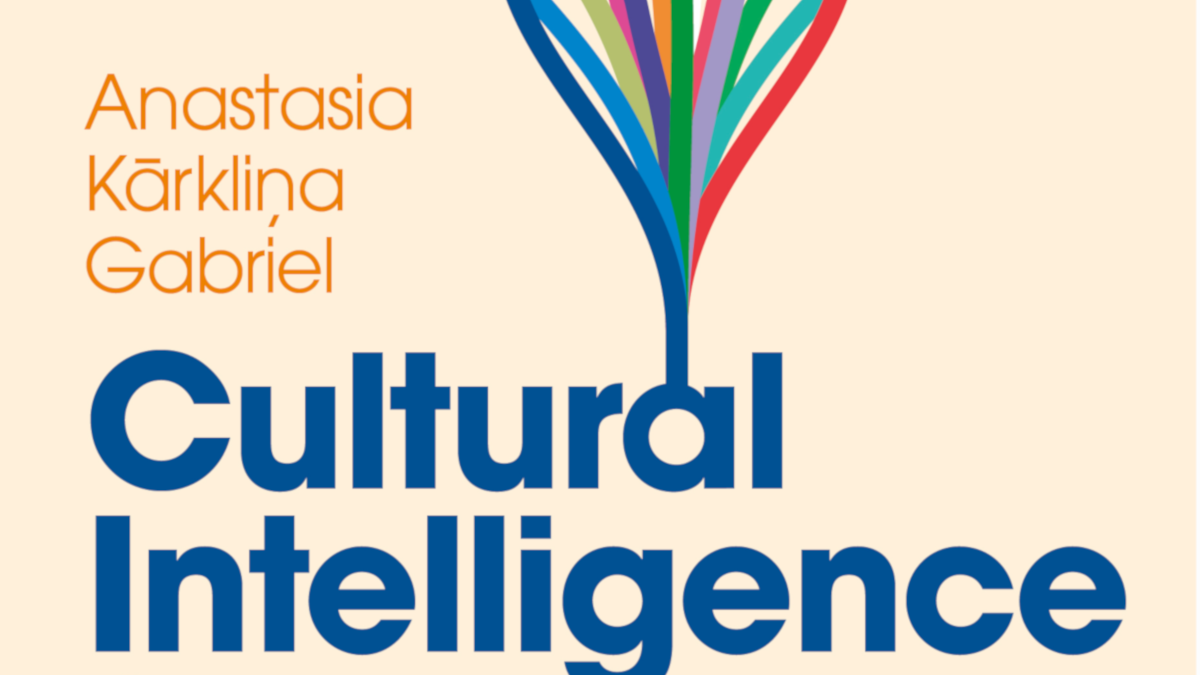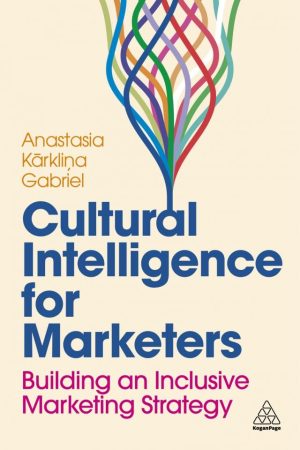In this piece MediaCat’s Content Editor, Grace Gollasch, talks to Anastasia Kārkliņa Gabriel, author of Cultural Intelligence For Marketers, about the themes of her new book, sensitive communications, brands and communities, and the future of marketing.
Hi Anastasia, Thanks for speaking. In your book you offer an innovative way of thinking about culture and brands and outline a foundational model for brands to use in their cultural strategy — the 4Cs: Culture, Communication, Critical consciousness, and Community. Can you share how these work together as a framework?
I wanted to conceptualize the 4Cs in a way that would be useful to a wide range of marketing professionals and their functions, from market research and insights generation to creative comms and customer engagement. As the first and central pillar of the framework, Culture examines brands’ role in culture and society as vessels of meaning; it shows how marketers can leverage this knowledge to identify cultural territories relevant to their specific brand, avoiding performativity in inclusive marketing. This is where cultural intelligence begins — with understanding how to decode culture — while other pillars build on top of this foundation.
Communication invites readers to think about how marketing messaging travels across the cultural landscape and how audiences can interpret it in ways that are anticipated and intended — or not. Most inclusive marketing strategies fail when brands don’t anticipate how their messages might be received, resulting in unnecessary insensitivities and mistakes that could have been easily prevented. Critical Consciousness unpacks what it means to be an ‘intersectional’ marketer who pays attention not only to superficial identity markers just to check the box but also understands them in the context of power: that is, questions of marginalization, appropriation, and so on. Finally, the pillar of Community focuses on the future of community and co-creation, emphasising the role of social impact and compensation over practices of extraction and appropriation.
These fundamental components form the basis of creating a genuinely inclusive marketing strategy that is an antidote to surface-level, performative attempts to appear as such.
Communication plays a crucial role in inclusive marketing. How can brands ensure their messaging is not only inclusive but also sensitive to various cultural nuances?
Take time to understand the role of representation in society as it is driven by mass media, like advertising. Too often, we are too focused on who is present in marketing communications; in other words, who is cast in campaigns to make the brand appear diverse and more inclusive. And for good reason: diverse representation is absolutely necessary as the first step. But that kind of thinking only scratches the surface.
Brands need to understand representation from the perspective of both creative storytelling (how the story is told) and brands’ mass influence on cultural consumption (what impact it has). Is the media representative of real people and how they live, love, and relate to one another? Is it responsible in how the campaign portrays different people, which is to say, is it actively working to counteract stereotypes and produce more accurate narratives? In my practice, which I also describe in the book, I focus on three core elements that I define as critical for brands’ capacity to executive with cultural fluency: subversive storytelling, power-shifting, and inclusive innovation.
You explore the danger of buzzwords and how they ‘can offer brands a semblance of relevance with minimal effort.’ This, in turn, hollows out the concepts, stripping them of their ‘intrinsic value and depth.’ As an industry, how can this be avoided?
Frankly, I am not quite sure that it can be avoided altogether! Though, I do believe it can be resisted and corrected by continuing to curate necessary and sometimes uncomfortable conversations in public.
It starts with being real about what’s happening. With attacks on diversity, equity, and inclusion initiatives across other segments of civil society, some leaders seem to increasingly view the emphasis on inclusivity and the social responsibility of brands in culture as a liability. For instance, more and more, anything and everything that pertains to diversity and inclusion in marketing is being collapsed under the broad umbrella of the term ‘purpose’. This is an example of how concepts get diluted and used inaccurately, losing their meaning and, therefore, the benefit they hold for our work. So, we need better definitions, terminology, and framework to clearly distinguish between concepts such as brand purpose as opposed to the broader practice of conscious marketing, which is, in my view, is the process of producing more responsible and representative media regardless of whether the brand is purpose-driven or not, and then, finally, cultural intelligence.
A lot of this responsibility rests on the shoulders of industry leaders who have access to resources, platforms, and big stages to drive and shape conversations across the profession. It is rather challenging to advance a more nuanced dialogue about brands and their role in society when leadership doesn’t see it as relevant to business and, therefore, doesn’t invest in it or publicly support it. Still, too often, the topic of conscious marketing gets treated like an add-on and a nice-to-have.
More than ever, it’s on all of us to defend whatever little progress the industry has achieved in the last three to four years and continue framing these topics as a matter of professional responsibility of all modern-day marketers operating in a multiracial and diverse society.
On the topic of buzzwords, ‘community’ has been popping up in the headlines since the pandemic. How can brands effectively contribute to the cultural communities and audiences they target without appearing opportunistic?
Brands will always be in a position of taking advantage of consumer needs and cultural opportunities, so, to an extent, some sense of opportunism is built into what brands do in the marketplace.
After all, brand-driven businesses go to market to sell products and services, not to provide a public service. And this isn’t something to shy away from: we should actually start exactly there — be clear about the reality of what brands do without romanticising to the point of being dishonest with ourselves and our audiences. Once we get real about this, which is exactly how many sceptical consumers who scrutinize brands see them, it becomes much easier to navigate these expectations and build trust with customers by seeing brands from their point of view.
With this in mind, engage, compensate, and look for ways to give back. The question to ask here is: how can brands not just extract value from cultural communities but also give back, whether that’s sharing the media platform, spotlighting emerging voices, contributing a percentage of profits, or establishing a long-term partnership with existing community organisations?
The book notes a gap in the current discourse surrounding community engagement, specifically regarding the responsibilities that brands may have towards the communities they engage. What are some potential ethical considerations or responsibilities that brands should be mindful of when interacting with communities, and how can businesses navigate these considerations while still maximising the benefits of community engagement?
Let’s begin here: brands need to become aware of themselves as mass media producers. This is to say that brands are directly responsible for disseminating cultural messaging and everyday portrayals of people and our lives. That comes with ethical responsibilities, although, sure, not all business leaders who view marketers as primarily responsible to the business and its stakeholders would agree with that.
While we might disagree on the role of social purpose in business, what is harder to deny, however, is the fact that advertising has created tremendous harm in society in decades past. For too long, brands have been implicated in normalising, producing, and reinforcing racist, sexist, and classist narratives and portrayals. And so, whether the brand’s positioning is purpose-driven or not, every brand-driven business ought to ensure it produces media that is responsible, representative, and respectful of all cultural communities.
In the current climate, some might argue that, for instance, representing members of the LGBTQ+ communities in advertising equates to brands engaging in ‘socio-political activism’ that’s threatening to business.
From an ethical standpoint I find that to be a perplexing claim. From an empirical point of view, research shows that the majority of consumers react favourably to inclusive ads. As an industry, we should set an ethical bar and hold it there: brands should be expected not to succumb to hatefulness that’s on the rise and to be expected to represent real customers — if they sell to them and profit from their purchasing power.
Throughout the book you have conversations with marketing leaders from firms including Mindshare, Dentsu, Edelman, and Saatchi & Saatchi. What was your biggest takeaway from these conversations?
As a proudly self-made immigrant woman myself, I intentionally featured in the book marketing leaders who hold identities other than ‘white and male,’ which, unfortunately, is what the face of leadership still looks like in corporate spaces. Through these interviews, I’ve only confirmed what I knew to be true all along: this industry would be light-years ahead if more visionaries like them had the resources, platforms, investment, and support they deserve to bring their visions into reality at scale.
Listen to those who don’t get to stand on the main stage as often because the perspectives we bring are seen as too disruptive and unpopular. Listen to those of us who bring lived experiences of struggle and resilience, which is what drives real cultural innovation. Listen and then platform, support, and back us in doing to riff off the words of Black feminist thinker Audre Lorde, what we came here to do: make the marketing industry more inclusive and equitable for all people.
How do you envision the future landscape of marketing evolving as more brands embrace inclusive marketing and cultural intelligence?
In the near future, things will get worse before they finally get better. Based on the current socio-political climate and right-wing attacks on equity and inclusion efforts from all fronts, brand leaders who believe in the importance of conscious marketing for business and society will have to be extra brave and lead the way toward inclusivity, empowerment, and belonging for all. Looking at the long-term future, all research shows that inclusive, conscious brands will thrive as Gen Z and Gen Alpha begin to dominate the marketplace in years to come, while the brands that resist the realities of cultural evolution in multiracial democracies today will fade out into irrelevance tomorrow.
Is there anything else you’d like to add?
I won’t get tired of repeating this: cultural intelligence leads to more conscious and culturally incisive marketing for all brands, whether the brand is purpose-driven or not. As an industry, we need to stop collapsing all conversations about brands’ role in culture and society into this broad label of ‘social purpose,’ which is starting to lose its coherence as a term. All brands act as cultural agents that influence society by being part of consumers’ lives and putting out mass media in front of real people who consume their messaging.
Marketing not only moves people and influences purchasing decisions but also shapes societal norms and values over time.
Every brand is responsible for managing its cultural influence in society both as a business imperative and a social responsibility, so whatever your stance on brand purpose is, cultural intelligence in marketing matters for the vast majority of brands out there.





































